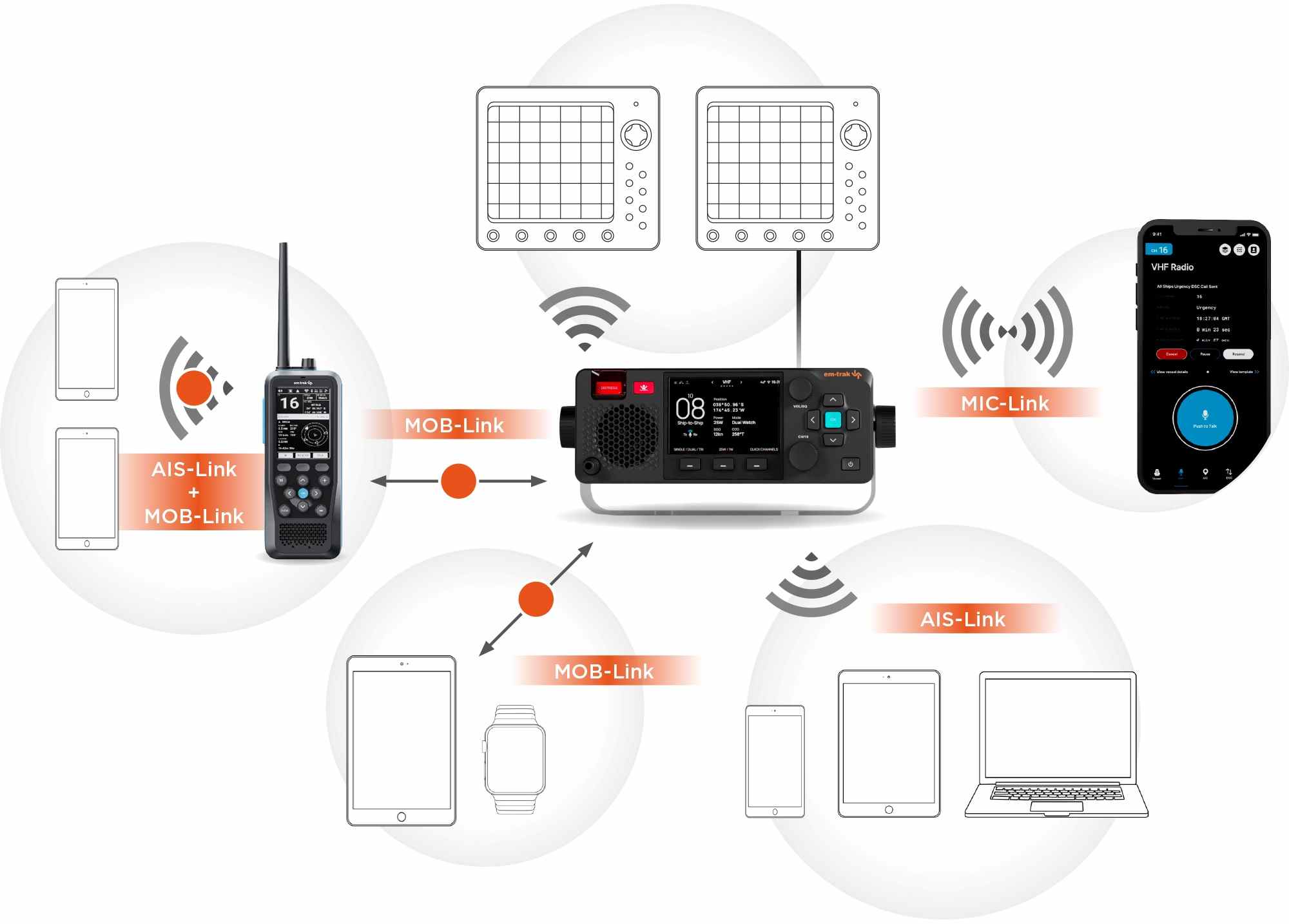Since March of 2016, U.S. commercial fishing vessels over 65 feet have been required to have at least a Class B AIS (automated information system) transponder on board. While the early AIS technology originated in the 1990s and came into regular use in 2002, when the International Maritime Organization (IMO) mandated it on certain large vessels, in the past couple of years AIS has taken a big leap, and em-trak Marine Electronics is pushing the envelope.
“We have a number of products ranging from a 12.5-watt Class A unit with its own screen to 2-watt Class B and 5-watt Class B+ units that have splitters on them so you can tie them into your existing VHF antenna,” says Alec Buchness, em-trak’s VP of sales in the Americas. While Buchness is proud of the company’s line of AIS units, the buzz and excitement at em-trak surrounds the company’s new combination VHF/DSC/AIS unit, the NEXUS.

“We showed it at METS in Amsterdam in November,” says Buchness. “And it was definitely out most popular item.” What emtrak has done with the NEXUS, is to combine the AIS transponder with VHF, and set it up to export information via hardwire to the vessel network, or via wifi or Bluetooth to computers, tablets, and cell phones. “It can even connect to your smartwatch,” says Buchness. “And it has an MOB feature so that if that connection is broken it sends an alarm right away.
“The NEXUS ties together all this functionality,” says Buchness. “It’s a 5-watt VHF, with the DSC, that’s digital selective calling which will send a preprogrammed distress signal, and the AIS.” Buchness adds that the users can still take calls on cell phones that are being used as mics with the NEXUS.
The price is higher than emtrak’s stand-alone AIS devices, but under $1,800, and Buchness notes that it’s in the range of buying an AIS transponder and VHF separately while having more functionality. “
“People say to me, ‘I have a small boat, I don’t need one,’ but I say, you’re exactly who needs one, especially in high traffic areas, those big ships may not see you.”
Buchness notes that the NEXUS can be tied together with other electronics through a vessel’s NMEA2000 or 0183 backbone and show targets on an MFD or plotter. “And I want to point out that our UK-based parent company, SRT, makes the software for about 70 percent of the AIS units out there,” he says. “So, we are not shopping around for pieces to put together to make our products. It’s all right here in house.”







